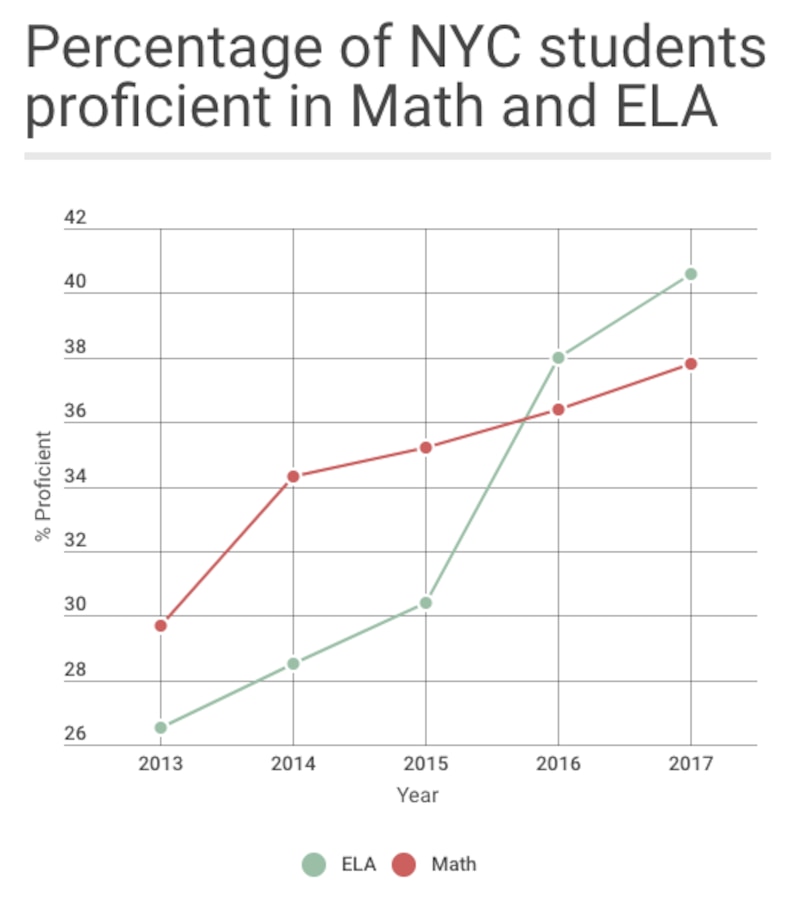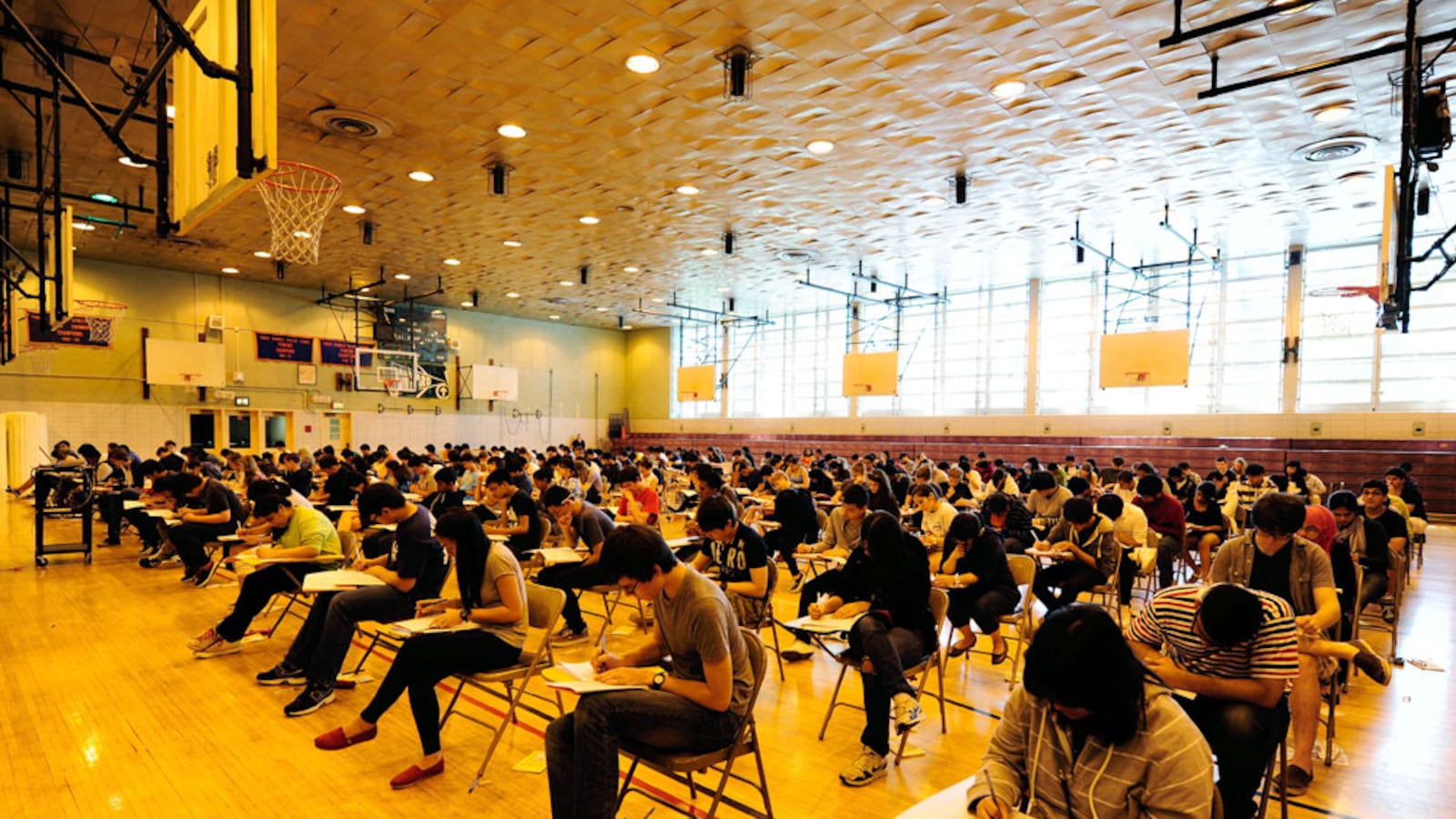The proportion of New York City students who passed state exams in math and English this past school year ticked up slightly, according to statewide test scores released Tuesday.
The latest results show the share of city students who passed the English exam jumped by 2.6 percentage points to 40.6 percent. The share of New York City students who passed math increased by 1.4 percentage points to 37.8 percent.
New York City’s growth on English scores was higher than the state’s increase of 1.9 percentage points. In math, New York City also rose more than the state, which saw an increase of 1.1 percentage points.
The bump in grades 3-8 test scores is far less dramatic than last year’s, but is more likely to be an accurate barometer of student learning.
Unlike last year, when state officials said changes to the tests made year-over-year comparisons unreliable, top education officials said this year’s gains show improvements in learning.
“The test scores we’re announcing today are a positive sign that we continue to steadily head in the right direction,” said the state’s education commissioner, MaryEllen Elia.

Observers have been eager to see whether more or fewer students opted out of the state exams. Statewide, 19 percent of students refused to take each test, down two percentage points from 2016. In New York City, 3 percent of students opted out of English exams and 3.5 percent opted out of math. A total of 17,234 students, or 4.0 percent, opted out of either exam. That’s higher than last year, when 2.4 percent of city students sat out the English exams and 2.76 percent opted out of math.
Despite the increase in New York City, Elia said that overall, a decrease in the opt-out rate is a positive sign for the state. Elia and state officials have been trying to address concerns over a perceived over-reliance on testing, evaluations and standards.
“It’s encouraging to see the test refusal starting to decline,” Elia said. “I think it’s also important to note that proficiency rates represent only the students who took the test.”
That could be particularly important for comparing New York City’s pass rates to the state’s as a whole. Though New York City topped the state’s pass rate of 39.8 percent in English and were slightly lower than the state’s pass rate of 40.2 percent in math, it is difficult to know how the additional students who refused the test would have affected the state averages.
Students who refused the exams were much more likely to be white, and much less likely to be poor or English learners, according to state officials.
In New York City, all racial groups made progress on English and math tests, and the so-called achievement gap between white students and those of color did not narrow significantly. On English tests, for instance, black and Hispanic students’ pass rates increased by 2.3 and 2.5 percentage points, respectively, while white students increased by 2.1 points. In math, white students posted slightly larger gains than their black and Hispanic peers.
“This is based on generations of disparity” said Mayor Bill de Blasio, when asked about the achievement gap. “That doesn’t, for a moment, make this any less urgent. We are just clear-eyed that it’s going to be a long battle. What’s good is we’re seeing consistent progress,” de Blasio said.
The pass rates for current English language learners increased to 5.6 percent in English and 14.7 percent in math. But the pass rates for students who were ever English language learners were significantly higher at 49.1 percent in English and 49.7 percent in math. In both cases, the city’s pass rates surpassed the state’s.
The number of students with disabilities who passed English rose by 1.3 percentage points to 10.7 percent, and in math by .4 percentage points to 11.8 percent. Again, these were slightly higher than the state’s.
Meanwhile, the uptick in New York City’s charter school test scores was once again higher than that of district schools. Charter schools’ pass rate on English rose 5.2 percentage points to 48.2 percent. Their pass rate on math increased 3 percentage points to 51.7 percent. Success Academy, the city’s largest charter network, far surpassed those averages with 84 percent of students passing English and 95 percent of students passing math.
De Blasio celebrated the city’s results. “This is a good news day,” he said, “because so many educators in this city working more closely than ever with parents have found ways to reach our young people more effectively.”
Though state officials consider the test scores this year comparable to last year’s results, the stability will not last long. Next year, the state plans to shorten testing length by two days and is also in the process of creating and implementing new learning standards.
Still, Elia said test scores will provide useful information over time — particularly if the state is focused on trends.
“I do think it’s reasonable to use test data to give an indication of how we’re doing,” Elia said.

